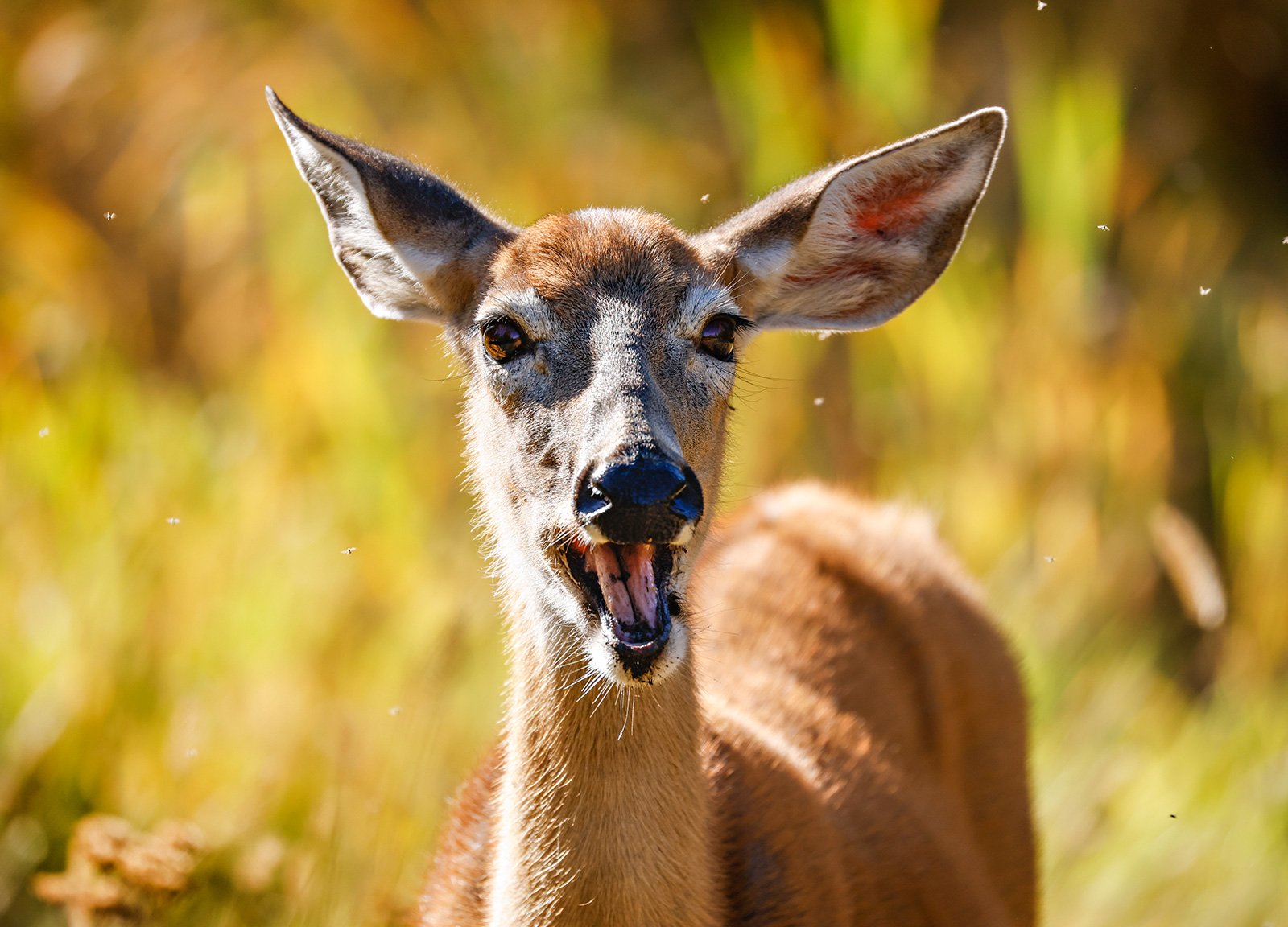Strong Whitetail Deer Numbers Forecast in Northwest Montana this Fall
Recent mild winters have led to consistent whitetail fawn recruitment; wildlife managers predict mule deer and elk populations to remain stable
By Maggie Dresser
As archery season continues through October and hunters prepare for rifle season to begin later this fall, healthy whitetail deer, mule deer and elk populations can be expected in northwest Montana following three consecutive mild winters.
In Region 1, most areas of northwest Montana saw strong whitetail fawn recruitment with slightly lower numbers in Thompson Falls, Noxon and Eureka, which saw mixed weather conditions last winter and resulted in lower survival rates.
“Whitetail populations are really responsive to winter severity,” said Neil Anderson, the Montana Fish, Wildlife and Parks (FWP) program manager for Region 1. “It was pretty good region-wide with a slow increase in whitetails over the last few years.”
Fawn recruitment ranged from 32 to 53 fawns per 100 adults during spring surveys, which should result in an increased number of bucks this season, according to FWP officials.
Mule deer numbers also remain stable, Anderson said, although recruitment wasn’t as strong as whitetail deer, and buck numbers have been increasing since 2017.
“There are much lower numbers of mule deer with isolated populations,” Anderson said. “I don’t expect as big of changes.”
Anderson attributes this to the steeper and rockier habitats preferred by mule deer compared to whitetail, resulting in smaller populations.
“Whitetails tend to be everywhere and typically in lower elevations,” Anderson said. “We are starting to see whitetails at 6,000-plus feet almost everywhere and mule deer tend to favor more rocky terrain.”
Elk calf recruitment was comparable to last year, FWP officials said, and their populations should maintain a consistent five-year average for survey areas in the region. Surveys in the west Clark Fork area resulted in 1,497 elk counted with a calf recruitment rate of 24 calves per 100 cows.
“Elk may be similar to above last year,” Anderson said.
FWP officials in Region 1 are still working to manage chronic wasting disease (CWD), a prion disease that infects deer, moose and elk. Although the disease is still abundant, officials have recorded a downturn in spread in the last two seasons. The disease was originally detected in Libby in 2019.
Hunters are encouraged to turn in samples at the daily check stations and FWP is offering free clinics in Kalispell and Libby on how to collect lymph node samples from harvested animals to educate hunters.
The Libby clinic is scheduled for Tuesday, Sept. 27 from 6 p.m. to 7:30 p.m. in the parking lot of Libby Sports Center at 204 West Ninth Street. Kalispell’s clinic is scheduled for Tuesday, Oct. 4 from 6 p.m. to 7:30 p.m. at the FWP office at 490 North Meridian.
“We are trying really hard to contain CWD as much as we can so we don’t see that expansion,” Anderson said. “We have been removing deer in town in Libby and we actually have seen the estimate go down in the last few years.”
In addition to deer and elk, Anderson says black bears numbers have been steady in northwest Montana and officials expect populations to continue to move into lower elevations and riparian areas. Bears will likely disperse into nontypical areas due to a poor berry crop this year, which he attributes to a cold late spring followed by hot weather.
“This year will be a bit different,” Anderson said. “The berry crop was kind of a failure and the bears might be dispersed. A lot of bears are getting into fruit trees. If you want to get into the woods, there are still black bears out but they might not be in the normal places.”
For more information, visit www.fwp.mt.gov/hunt.